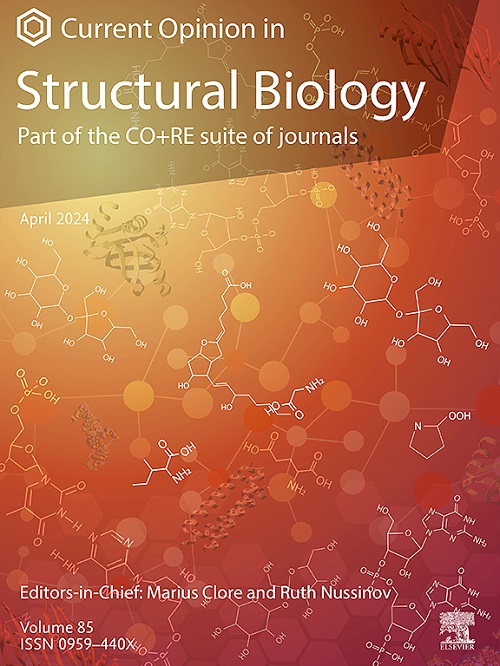氢/氘交换质谱法在早期药物发现中的作用
IF 6.1
2区 生物学
Q1 BIOCHEMISTRY & MOLECULAR BIOLOGY
引用次数: 0
摘要
蛋白质的功能依赖于蛋白质动力学,因此动态信息对于具有挑战性的蛋白质靶点的药物发现至关重要。传统上,通过实验评估蛋白质动力学是非常有意义的。然而,酰胺氢/氘交换质谱(HDX-MS)现在是一种成熟的技术,可以在肽水平上揭示蛋白质动力学、结合位点和变构变化的细节。HDX-MS是一种多功能和强大的生物物理工具,可以深入了解许多蛋白质系统和复合物的工作原理。在过去的二十年中,仪器仪表、自动化、数据分析和解释的进步导致了HDX-MS在学术和工业环境中的普及和普及。在这里,我们概述了HDX-MS在早期药物发现中的当前应用,并说明了HDX-MS与计算化学的相互作用,以最大限度地提高HDX-MS实验数据的价值。最后,我们考虑了在未来几年可能有助于HDX-MS数据结构解释的方法。本文章由计算机程序翻译,如有差异,请以英文原文为准。
The evolving role of hydrogen/deuterium exchange mass spectrometry in early-stage drug discovery
Protein function relies on protein dynamics and therefore dynamical information can be crucial for drug discovery of challenging protein targets. Assessing protein dynamics experimentally has traditionally been nontrivial. However, amide hydrogen/deuterium exchange mass spectrometry (HDX-MS) is now an established technique that can expose details about changes in protein dynamics, binding sites and allostery at the peptide level. HDX-MS is a versatile and powerful biophysical tool to gain insights into the workings of numerous protein systems and complexes. Advances in instrumentation, automation, data analysis, and interpretation over the past two decades have led to increased uptake and democratization of HDX-MS in both academic and industry settings. Here, we outline the current uses of HDX-MS in early-stage drug discovery and illustrate the interplay with computational chemistry to maximize the value of data obtained from HDX-MS experiments. Finally, we consider approaches which may aid structural interpretation of HDX-MS data in the coming years.
求助全文
通过发布文献求助,成功后即可免费获取论文全文。
去求助
来源期刊

Current opinion in structural biology
生物-生化与分子生物学
CiteScore
12.20
自引率
2.90%
发文量
179
审稿时长
6-12 weeks
期刊介绍:
Current Opinion in Structural Biology (COSB) aims to stimulate scientifically grounded, interdisciplinary, multi-scale debate and exchange of ideas. It contains polished, concise and timely reviews and opinions, with particular emphasis on those articles published in the past two years. In addition to describing recent trends, the authors are encouraged to give their subjective opinion of the topics discussed.
In COSB, we help the reader by providing in a systematic manner:
1. The views of experts on current advances in their field in a clear and readable form.
2. Evaluations of the most interesting papers, annotated by experts, from the great wealth of original publications.
[...]
The subject of Structural Biology is divided into twelve themed sections, each of which is reviewed once a year. Each issue contains two sections, and the amount of space devoted to each section is related to its importance.
-Folding and Binding-
Nucleic acids and their protein complexes-
Macromolecular Machines-
Theory and Simulation-
Sequences and Topology-
New constructs and expression of proteins-
Membranes-
Engineering and Design-
Carbohydrate-protein interactions and glycosylation-
Biophysical and molecular biological methods-
Multi-protein assemblies in signalling-
Catalysis and Regulation
 求助内容:
求助内容: 应助结果提醒方式:
应助结果提醒方式:


